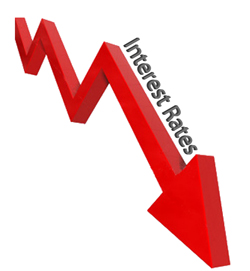What is the real interest rate? It is the nominal rate minus the inflation rate. I previously wrote about one problem with this notion (the nominal rate exists in the market, but the real rate is imaginary). Now let’s turn to another problem.
To visualize this problem, let’s make an analogy to someone who inherits a family farm. There are two approaches to making a living from a farm. In the first—we’ll call this investing—Farmer Brown determines how to produce the greatest amount of food at the least cost. He increases production of milk from his herd, and apples from his orchard.

In the other approach—we’ll call this liquidating—Liquidator Larry sells off the farm, bit by bit. The back 40 acres can be sold to a developer of high-end condos. The apple trees can be chopped down, because cabinets made of fruitwood are hip in high-end condos. The barn can be torn down, because those condos need flooring. Wood planks from old barns is really cool.
Brown operates his capital asset to grows crops, but Larry sells off his capital asset to buy groceries. Both eat well this year, but Larry will run out of farm eventually. Larry is consuming capital that was accumulated by his father and grandfathers.
Next let’s look at interest, and then we can tie interest to farming.
Consider two examples. In both cases, you have a $1,000,000 nest egg. The cost of groceries is $20,000 a year.
One example is when you earn +2 percent—i.e. $20,000—and the price of food is holding steady. You can spend the interest and keep your principal indefinitely.
The other is when you’re paid nothing, but the cost of consumer goods is falling at -2 percent. You must spend $20,000 of your principal to buy groceries. Every year, it dwindles. After 20 years, you have only $667,608. Although groceries are cheaper too, it’s small consolation because you’re eating your life savings.
Case one looks a lot like Farmer Brown, doesn’t it? To pay interest, the borrower works your capital to produces new goods which he sells at a profit. To earn a living, Brown works the farm to produce crops. This model is about earning a yield on capital. Modern monetary economists dismiss this as a mere nominal yield.
Case two is like Liquidator Larry. You’re paid no interest, because your cash is doing nothing productive. Just as Larry’s farm is producing nothing. With no interest, or no milk and apples, there is no yield. This model is about consuming capital.
Let’s extend the analogy further. Suppose the price of Larry’s farm bits is rising at +2 percent per year. That’s equivalent to your cost of groceries falling at -2 percent per year. Although a smaller chunk of capital can buy the same food, both Larry and you are forced to consume capital, to liquidate your estates.
I say there is no actual yield from a farm that is not growing apples or producing milk. I say there is no actual yield on cash that is warehoused, but not used productively.
However, modern monetary economists sing a different song. They tell us that what matters is the real interest rate. Real = nominal – inflation. They say if Larry grows no crops, but the price of his farm is rising, then he has a real yield, just as if he was operating his farm. They insist that if you are paid zero interest on your cash, but consumer prices are falling, then you have a positive real yield. They deny any difference between production and liquidation.
Modern monetary economics is a siren song, especially alluring in a world of falling, zero, and negative interest rates. I urge you not to dash your wealth against the rocks.
See more for




















